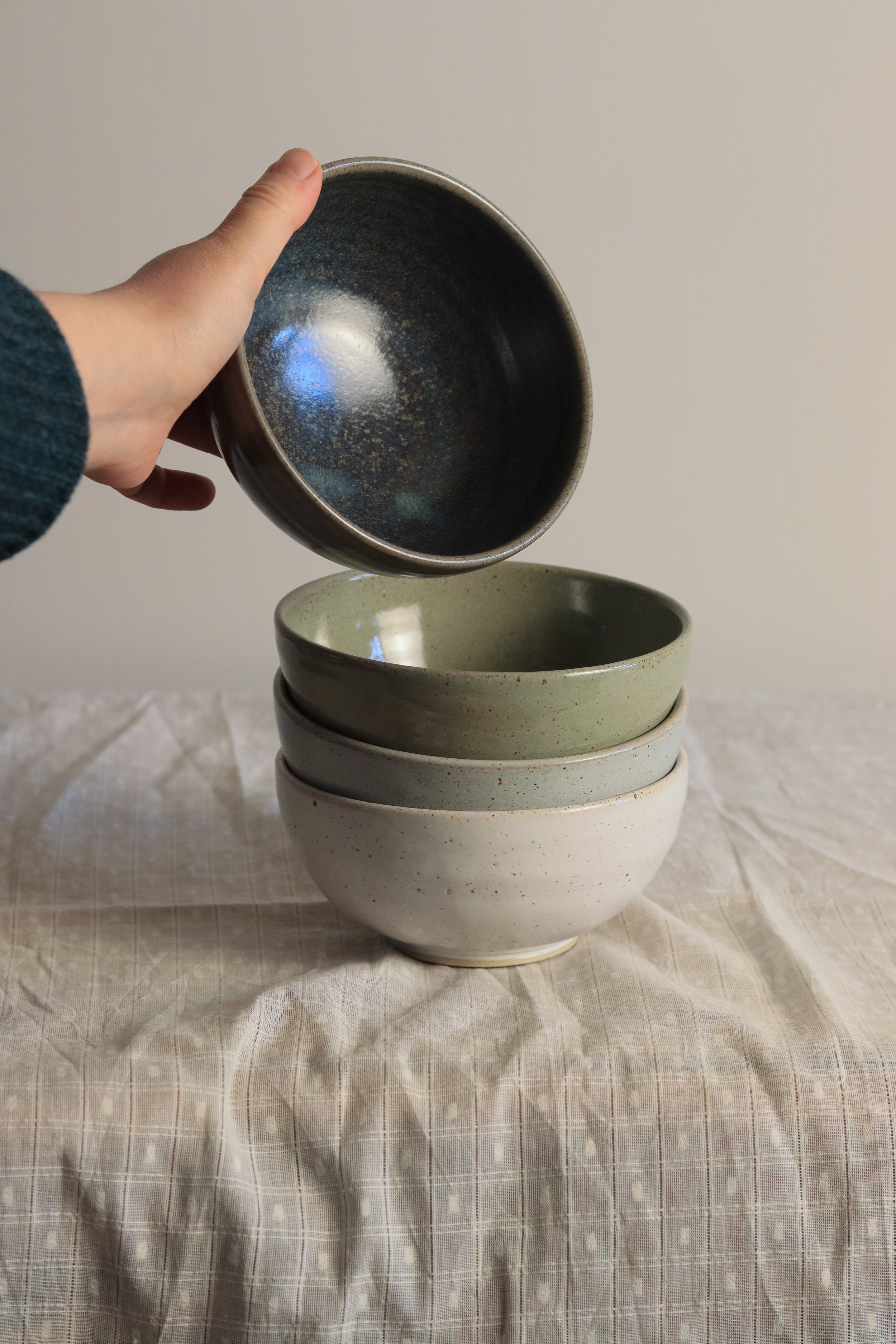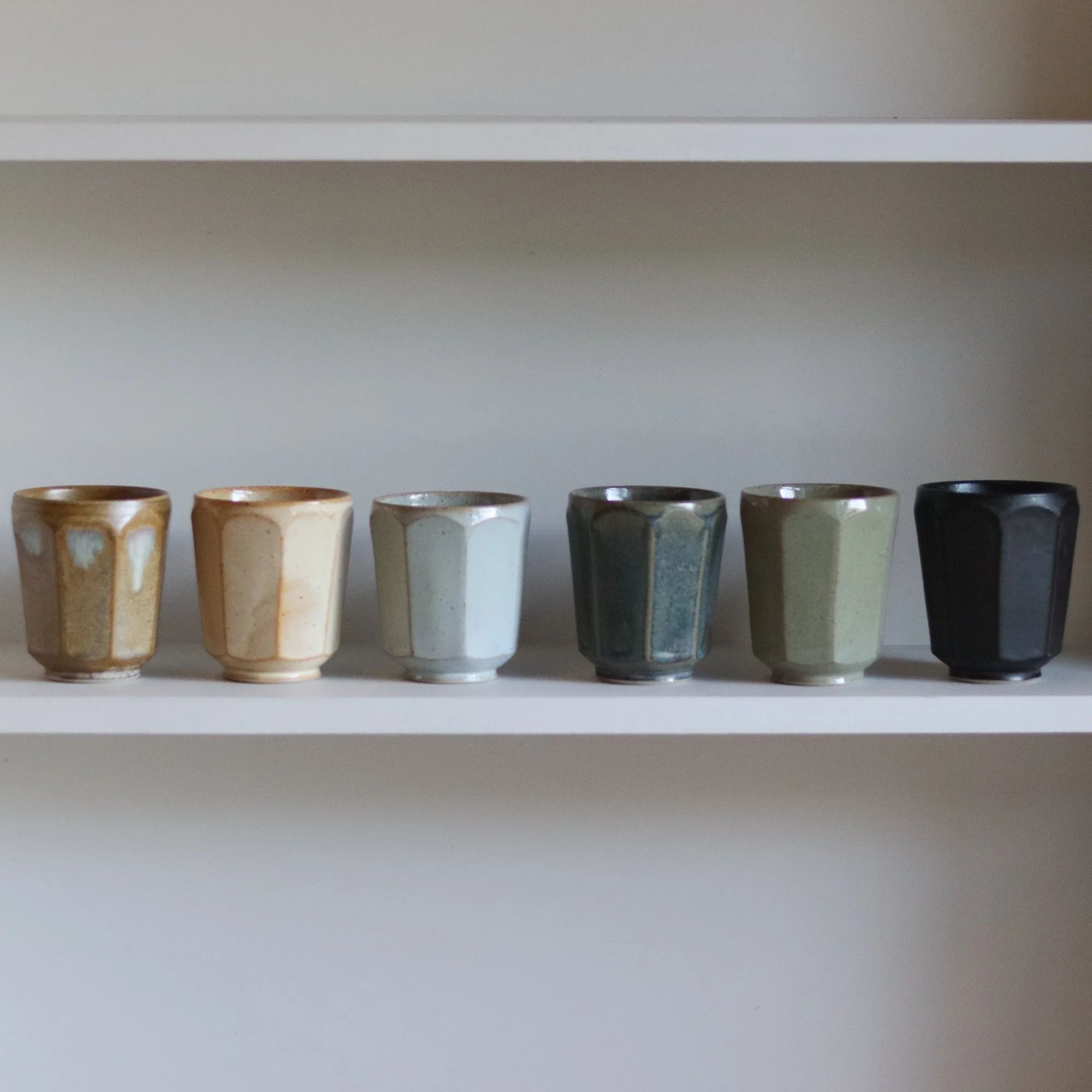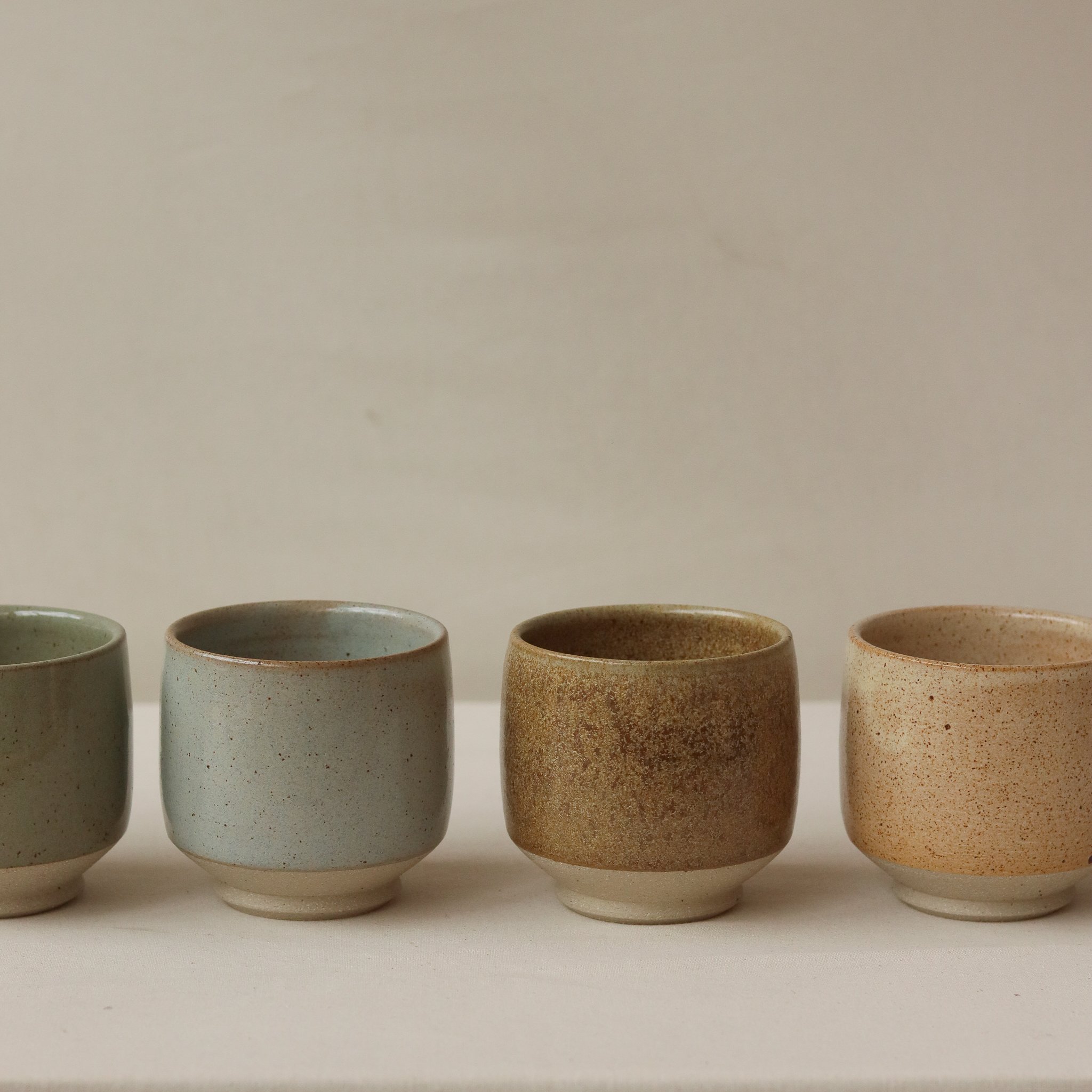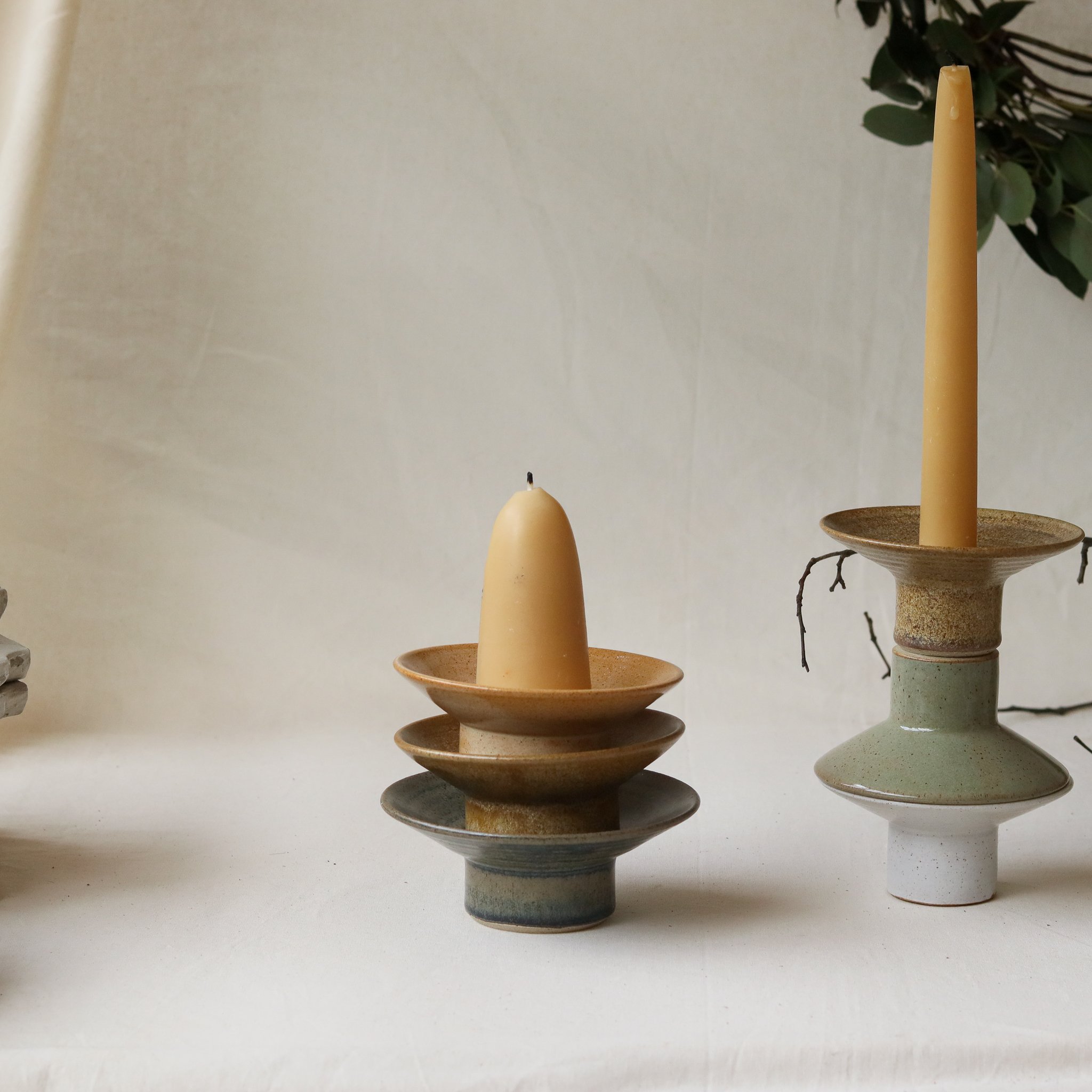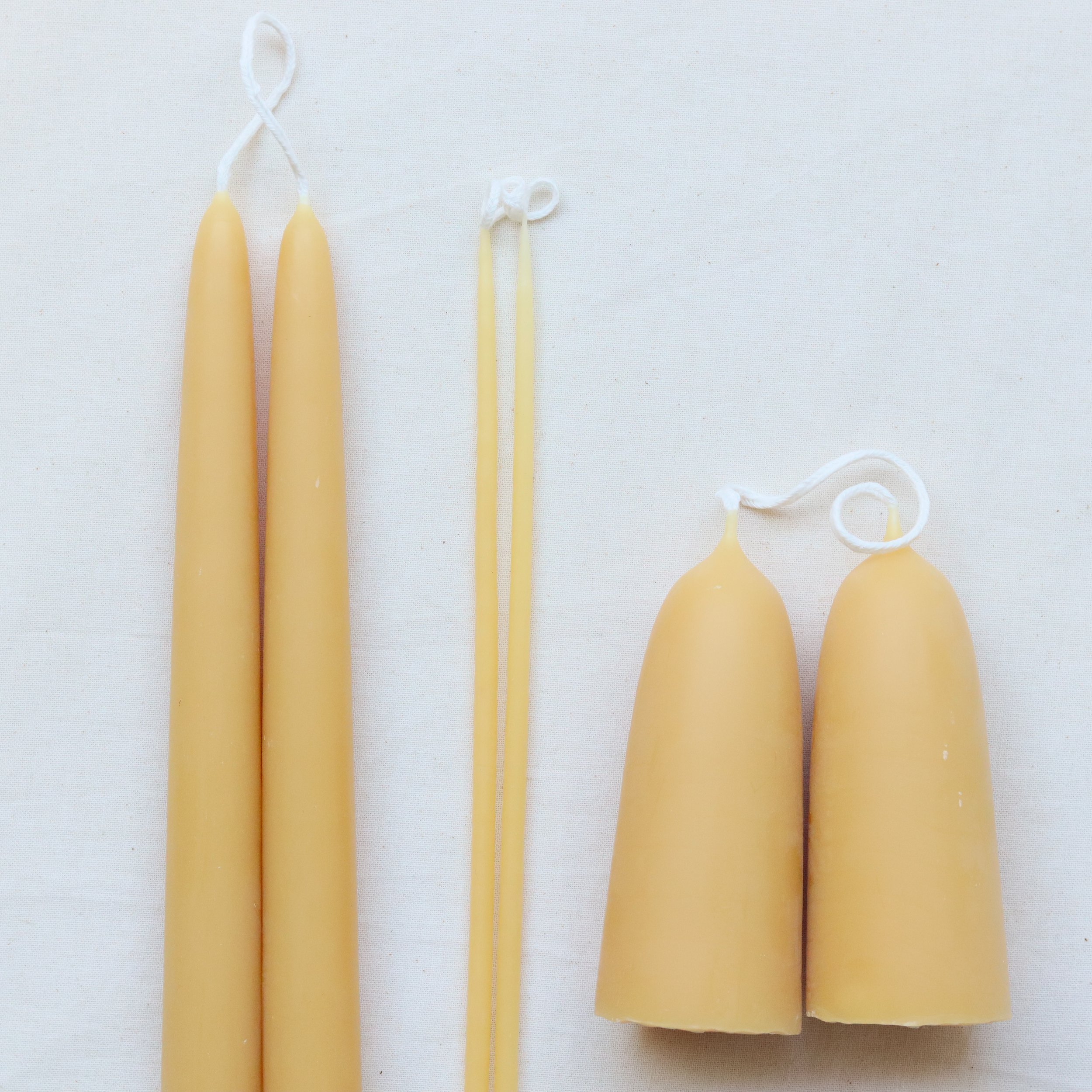Our Studio Journal - March
Cereal Bowls in Flecked Stoneware - from top to bottom nori, olive, powder and speckled white
March has come and gone in the blink of an eye. This month has marked my return to the studio after my maternity leave and it feels good to be getting back into the swing of it all. I’ve been thrown right into the action as we prepare for the gas firing in April. It is a big kiln to fill and Matt and Luna have been working on quite a few pieces, so there is a great deal for me to glaze. I feel I need to spend time with the forms before deciding on glazes and mark making, so, although there is a sense of urgency when I arrive at the studio, I hold back and busy myself with other tasks whilst I take stock.
We will be firing many flatware items such as dinner bowls and plates in our tenmoku glaze - this will be the bulk of the firing. But also some more experimental display pots will be included and it is these ones I must consider carefully.
We’re also using this firing to try out four new ash glazes, and I want to conduct some research into using slips underneath our glazes, so I’ve been on with that. It looks a bit like a science lab in our studio at the moment, albeit a messy one!
Glaze and slip tests being prepared for our April gas firing.
Aside from this, and from the regular re-stocking of our online shop (including the cereal bowls pictured above), this has been a month of reflection and research. We’ve both felt the need for a bit of experimentation and inspiration and so some time has been carved out for that. We headed to Kettle’s Yard at the beginning of the month, just to get away and be in an inspiring space. There was a lot to take away from the experience, especially with regard to styling our pots in spaces. You can see some of the photographs we took at Kettle’s Yard here.
A Lucie Rie bowl at Kettle’s Yard
Matt has been working on a new maker’s mark for us this month, carving out some marks in porcelain. I’ve been drawing - sketching ideas with no end point in mind, just setting things out from inside my head (or wherever ideas really emerge), and seeing where things take me.
Alongside this more creative and exploratory phase we’ve also been dedicating some time to reading. We’ve especially been enjoying a book called ‘The Pottery of John Ward’ by Emma Crichton-Miller which I have borrowed from the library. Ward’s work is truly inspirational, but I also really appreciate the way this book is written with excerpts from Ward also, who is extremely eloquent about matters not easy to put into words. I enjoyed this passage:
‘There is a particular stage in the growth of the pot when a decision can be made which moves the development of the form into one of two very different worlds. The first continues with an open form such as a bowl, which is just holding a volume of space. It has no tendency to enclose space but offers it up like cupped hands. The second possibility happens as soon as the curve of the pot turns inwards; a tendency to clasp a volume of space. This can be a very different world of taking rather than giving. The more enclosed, the greater the sense of secrecy or mystery.’
Whilst it isn’t often we consider form in this way, giving more attention to factors of use and function, it is an intriguing thought to think about form in this way, something we can muse over when working on more decorative forms.
I’ve also been looking at the drawings of Tomma Abts, via her book ‘Mainly Drawings’ which I’m really enjoying.
Many of the drawings I’ve been working in in my sketchbook have been open ended, explorative, but I do hope to begin to apply some ideas from paper onto clay, via the medium of slip and sgraffito. Occasionally I’ve been drawing and wondering where on earth the impetus has come from. An essay, from the Abts book, by Bob Nickas opens with this thought:
‘A pile of hay or compost subject to moisture or fermentation from microbial growth will generate heat. As the temperature rises inside, if it has no means of escape, the material oxidises and eventually will ignite. This is a spontaneous combustion, a process requiring a chemical reaction that, in order for the material to reach the point of ignition, may take weeks to develop. What is observed, however, seems to have occurred in an instant.’
It seems to me that creativity can be like this, seemingly spontaneous and out of nowhere, yet in fact it is a longer, fuller, more complex process that we allow. So, whilst we haven’t yet anything we care to show the wider world in terms of the drawing / slips testing, please know we are working away trying to maintain the right environment and conditions for a ‘spontaneous creative combustion’! Watch this space….
Until this point we’ll be here, continuing to draw and also make pots - lots of pots.

